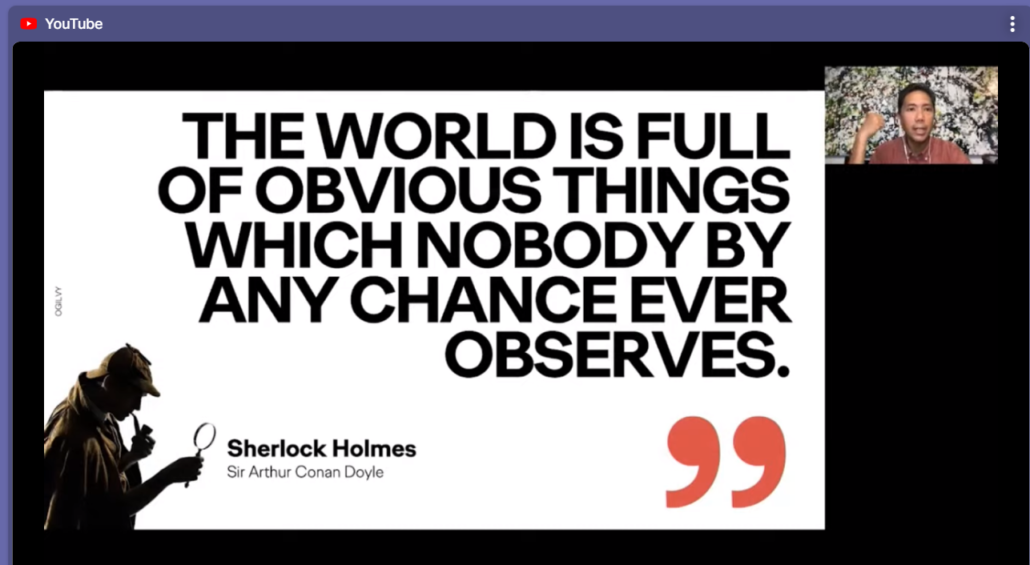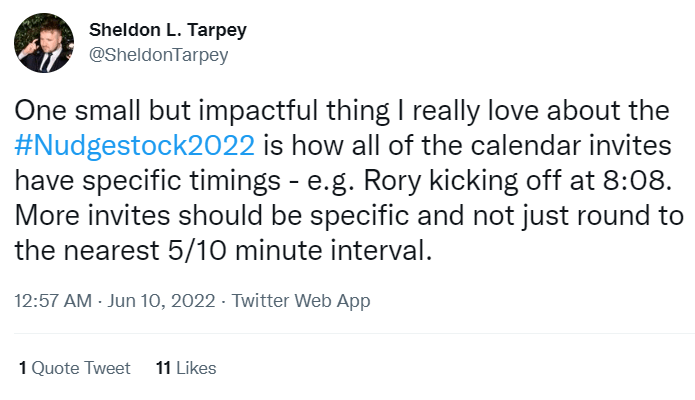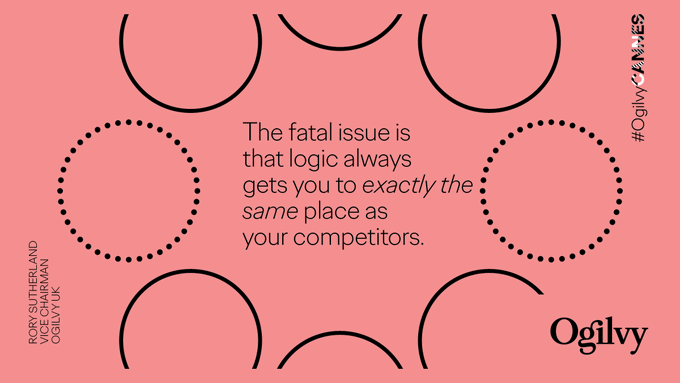Why innovation in events isn’t possible without behavioral science
Two weeks ago I went to Nudgestock 2022, one of my favorite events, which happens to be the behavioral science festival. Obviously, I enjoy the content, but it is also a source of inspiration for me when I apply that to the events business. I’m not sure to what extent the Nudgestock team is intentionally applying BS when planning the event, but they’re not afraid to experiment – and I’d say that’s the biggest insight – and the biggest challenge – for the event community.
Despite all the tech progress, events are in desperate need of innovation. But innovation can’t be achieved without trying new and unconventional methods, without testing something no one else has tested; without going against the common logic. Here’s the point: common logic will lead you to the same ideas and results that everyone else has, so you won’t progress much. Behavioral science shows us that people think mostly irrationally and exploring this path will help us find unexpected ways to achieve our goals. It takes two things: a willingness to learn more about human behavior and a willingness to experiment.

Need for Experimentation
Experimentation was exactly what Rory Sutherland, Vice Chairman of Ogilvy, addressed in his opening remarks. He says, “what I think is wrong with business today … there’s too much quantification of what already is and there’s too little speculation, exploration, experimentation”.
Experimentation – or lack of it – is what’s coming up in eventprofs conversations a lot lately. We went through realizing that we should ditch the old approaches, to recognizing that technological advancements and data aren’t the ultimate answers to our problems, to – I hope – starting to realize the solutions lie somewhere we didn’t know to look (yet).
The two main things I heard about being back at in-person events from colleagues who’ve been to completely different events are:
1. It’s great to see each other face-to-face after such a long time;
2. The in-person event design isn’t much different.
But everything else IS different. People – eventprofs included – had 2 years to reflect on how they live, what matters and what doesn’t; policies have been changed; business processes have been redesigned.
Events need to keep up, and the only way to do it is by experimenting, which involves three steps: observe, explore, and test.
Observe
The Nudgestock presentation by Paolo Mercado, VP for Behavioral Science of Ogilvy Consulting Asia, was about why marketers should rely less on survey questions and more on observation to figure out where growth opportunities exist.

The behavioral experts have been banging this drum about businesses relying too much on data and self-reported behaviors for a while now. I discuss this very issue with Bri Williams, behavioral expert and MD at People Patterns, on the Event Psychology podcast. Bri says, “It’s compelling to hear directly from the customers because we think that’s truth. And they are not lying; but asking them is different from the real behavior. Most market research is not going to give you the answers you need in business. That’s why a field of BE is so important – it shows us how people are wired to make decisions”.
I think the problem is that numbers seem so convincing and objective. Observations, on the other hand, seem pretty subjective and therefore unreliable. Survey results seem to be enough – but only if we assume people are rational and make perfectly logical decisions.
But, as Rory Sutherland puts it, ‘The human mind does not run on logic any more than a horse runs on petrol’. Many things affect what we pay attention to, how we remember our experiences, and what drives our decisions. It’s a bunch of subliminal details we don’t consciously register; things that happen before or after the critical moment (=an event).
Having data is a great advantage we’ve got. Businesses, including event businesses, fail to realize though that data should always be accompanied by observations. I’d even argue that observation should be given preference. Why? Because “people don’t think what they feel they don’t say what they think and they don’t do what they say” (David Ogilvy) and because, as Paolo concludes, marketers think about what people should do, but instead should watch what they actually do, and build on that.
The IrrationalLabs team shared a pretty telling example recently: one of the team members polled her male friends on whether they preferred women with or without makeup. 78% of men said a no-makeup look is better. Then, she made two versions of her profile in a dating app where everything was the same except for the makeup/no makeup condition. Results? The makeup profile got 34% more messages from men.
These kinds of things happen all the time because no one is conscious of all the things going on inside their heads. Our brains go through dozens of invisible steps every time we make a decision, and observing helps us catch them.
Back to event surveys, here is what you can do. A survey space is limited; human experience researcher Daria Tikhonova says having 5 questions on your survey is the best. Don’t waste a survey space by asking ‘what speaker did you like the most?’ Research proves that human memory isn’t reliable; we’re affected by peak-end rule, false memory, and a bunch of other cognitive traps.
Instead, observe at the time: how many people were on their phones or looked bored; how many people walked out; how many questions were asked. Then, combine it with whatever data you have on that session – and voila, you get a much more accurate idea of what topics or speakers your audience found interesting.
Explore
Rory Sutherland argues that we often just go with the first plausible, rational answer to our pressing question, when in fact we should explore further and find alternatives, additional explanations. It’s ‘lazy why’ he calls it: “Why unlike what generates ideas…you can compile a lot of statistics, you can get a lot of factual information…but mostly it doesn’t generate the kind of insights that really generate interesting and new ideas. On the other hand, if you come up with an interesting “why”, you’re probably 75% there… If you can ask a different question or come up with a different explanation, the likelihood that it generates a creative solution which mostly will work but certainly will be worth testing is just inordinately higher. Why is inordinately more valuable than what and yet businesses spend 90% of their time effectively asking a what”.
And here’s another point: exploring further often leads you to realize “that explanation for why something is happening probably lies somewhere in the field of behavioral science and psychology”.
For example, there are several answers to why sales increase when something is on sale: the obvious one is that its price is cheaper, but there’s also the scarcity effect at play, and maybe the sale item is more salient?
Similarly, why do people go to in-person events? The obvious answers are to learn and network. However, could there be another reason?
Maybe they go because it feels like a privilege and boosts their status? Or maybe it’s some sort of escape from their desk routine? Or maybe it’s the desire to belong? So what does that tell us? Is there anything we can do to better satisfy these needs – like giving them a certificate of attendance, or playing around with learning formats, designing unexpected combinations, and upending the status quo?
Who said you need formal networking sessions and not walking meetings around the city center with a smell map in hand to network effectively? Who said that an online speaker’s default option is Power Point slides and not pieces of paper with text?
Or take virtual events. If you ask ‘What are the benefits of virtual events?‘, the first things that come to mind are better reach and less carbon footprint. But if you explore further, you’ll learn about a 260% increase in female participants – a hidden benefit that should not be taken for granted and that you can build on when creating your company’s event strategy.
Test
According to Katy Milkman, economist at The Wharton School of the University of Pennsylvania, ‘Testing was more useful than expert prediction so far’. Testing something new is risky, but a sustainable way to innovate. It’s the only way to find out what works better, and what your customers (or attendees) want and care about. When it comes to testing new things at an event, Nudgestock provides plenty of examples.
It seems like some elements are insignificant, but interestingly, they don’t go unnoticed. For instance, Nudgetsock’s specific timing: every session started at a very specific time, e.g. 11:29 – it may or may not affect every attendee, but I’d say it was effective in drawing attention.

‘Make it specific’, after all, is one of those things that focuses the mind. Additionally, it serves as a subliminal message that the organisers are so confident in their event setup that they give you the most precise time.
But this year’s favorite of mine was the panel on the psychology of electric cars adoption… that was held in an electric car, of course! Because why not?
A pre-recorded conversation of four experts while they are ‘driving to the event’. In addition to the surprising, light, yet very catchy format, they ended it with a big splash of humour – a killer combo for everyone to remember the session.

I’d suggest that instead of boring ‘future trends’ sessions eventprofs should test these kinds of seemingly-crazy, does-not-make-sense, or nobody-does-that ideas.
It’s a wild, wild BS
As I said at the beginning, ideas like that come from understanding how the human mind works, and learning human behavior. Elina Jutelyte recently provided a good example by saying: ”Eventprofs should be talking about what potential non-attendees will NOT get as a result of them missing your event…I don’t see this in use for events too often.”
The reason why we don’t see it in use in events is because eventprofs are long overdue to learn and apply brain science insights in their job. Many industry professionals prefer to take a longer route to solutions that would make their jobs easier and improve their events instead of experimenting with ideas based on behavioral science and psychology findings.
In the example above, we’re talking about the (very well known) concept of loss aversion, which says that people are much more likely to act when they have something to lose rather than gain.
In other words, if you want people to buy tickets to your event, it’s better to tell them what they’ll miss if they don’t go. But what you’ll see in 99% of event promotions are the benefits. Why? Because it’s logical. But as we already discussed, logic is not your friend when it comes to decision making.

Evolutionary ideas
Another misconception about experimenting and innovating is that those ideas should be bold and big in order to work. I see this often when advising on event psychology: only ‘bold’ and ‘loud’ changes to existing practices are considered worth time and money. However, that’s a fatal mistake. In fact, the opposite is true: tiny, seemingly insignificant changes lead to major improvements and behavior change. Such is the power of human nature.
One key thought in the newly published ‘Evolutionary Ideas’ by Sam Tatam is just about that: small changes and ideas adopted from other fields lead to more and better innovations than ‘revolutionary’ concepts.
Here is one example. When selecting an event venue or designing a room, look around and make sure your room has more curvy lines than sharp ones. No, you won’t have people walking around and being awestruck by it. But yes, it will have an impact on their subconscious; and that impact will be more powerful than we realize. Neuroscience provides us with an explanation on why it works: “Research has found that when people look at a sharp object in an MRI scanner, it activates a region of the brain (called the amygdala) that responds to danger, whereas curved objects don’t elicit this mental reaction”. More than that, “our preference for curves cannot be explained entirely in terms of a ‘cold’ cognitive assessment of the qualities of curved objects…Curvature appears to affect our feelings, which in turn could drive our preference.”
Another example: at Nudgestock, the CloudArmy team showed the results of testing the Netflix sonic branding, which is how people react to Netflix opening with or without a sound. It’s just a sound, right? It turns out it has a huge impact on consumers’ attention and emotions.

Remember: the same applies to every element of your event. Have you considered a signature tune for your event? Have you ever thought of adding a warm scent to the exhibitor booth to increase the dwell time? Have you tested the impact of brain breaks on your attendees’ satisfaction or suggested headphones to increase connectivity and engagement between an audience and a speaker? Have you taken the anchoring effect into consideration when thinking about the ticket sales? Have you experimented with a debate to spark more conversations, a ballet session for an active break, or mapping the space based on participants’ collection of awe experiences? Have you thought about providing your speakers with research-backed tips on brain-friendly presentations (like using an inclusive font, or choosing a background that reduces online attendees fatigue)? Have you ever considered that it might be more effective to give away event swag intended for the attendees’ family or coworkers rather than attendees themselves?
I believe these are the things – small or big, not-so-obvious, and psycho-logical – that will lead to innovation and transformation of event experiences.



